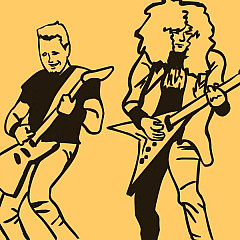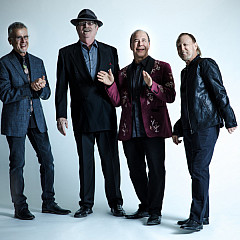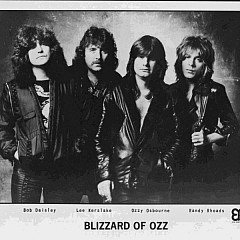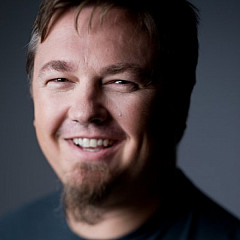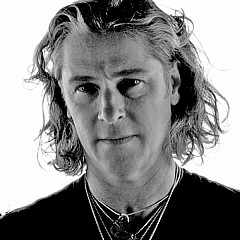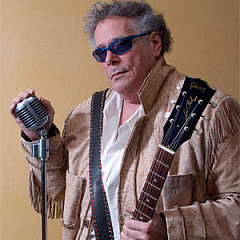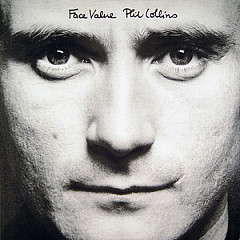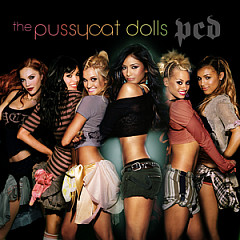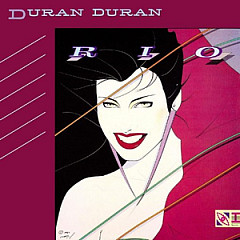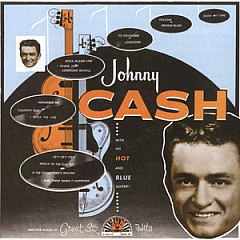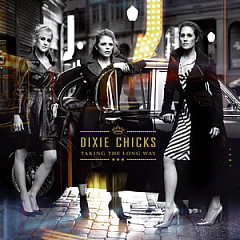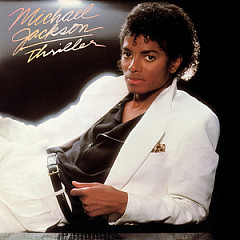
Although her fame wasn't as widespread as other rock acts of the era, Jordan's bluesy/melodic-rock style brought her major success in her homeland, where she scored an impressive 10 Top 20 singles on the RPM100 chart between 1988-1998.
In the midst of her chart reign, she hit the road in 1994 in support of her Rats album, with Hawkins manning the sticks. And now, an archival live recording from that tour, Live In New York Ninety-Four, has been released - shortly after the one year mark since Hawkins' passing - and features some of Jordan's best-known tunes, including "Sun's Gonna Rise," "Make You A Believer," and "High Road Easy."
Jordan spoke with Songfacts shortly after the album's release, and discussed her time with Hawkins in the band, the lyrical inspiration behind several tracks, and why a tune that seemed destined to become her Stateside breakthrough was tanked by her then-record company.
Sass Jordan: Somebody I work with said to me, "Sass, one of the main questions we get on your site is, 'When are you going to do a live album?'" And that stuff is sort of peripheral to me, because I'm always wrapped up in my own "cacara," as we say in Italiano. But I did know that we had this recording somewhere in a box.
Compound it with the fact that my friend said, "It's also been a year since Taylor passed. Maybe it would be nice to do some sort of a tribute to him, because we know how much he meant to you." And I thought, "Right there, my dear, is a fabulous combination of reasons to put this record out now." It's always about timing, isn't it? And it felt right to me.
 Sass Jordan with her band in 1994: Taylor Hawkins, Nick Lashley, Tony Reyes, and Stevie Salas. Photo courtesy of Chipster PR.
Sass Jordan with her band in 1994: Taylor Hawkins, Nick Lashley, Tony Reyes, and Stevie Salas. Photo courtesy of Chipster PR.Songfacts: What did Taylor bring to the band at the time?
Jordan: This was his first professional band, so he was learning the ropes. Just being on a tour bus, traveling from country to country - because we were in Europe as well with that tour - and being a part of a working band and playing these huge shows. His whole life up to that point, he was 22 I'd say, had been dreaming of doing this. It was like he suddenly felt like he was catapulted into it, and he was living the dream. He was having the best time ever. And his incredible joy and his incredible energy just made everything kick up a notch.
It's very easy to get jaded and cynical when you're in a rock band on the road, especially after a couple of months, so his energy was like that little spark that lit the fire, that kept us just like [let's out a scream - hear it below].
It was a wonderful, wonderful time... and also a horrific time, I'm not going to lie - because nothing is always 100% great or 100% terrible.
What was difficult about it was being on the road. It's exhausting and it just wears you out. You get worn out emotionally, physically, spiritually, mentally. That can get you into states of moods and states of being, "Why am I alive?" [laughs] I mean, that happens in regular life, too. But everything is compounded in a situation like that. It's just so intense, and the pressure is intense.
Songfacts: What do you remember about 1994?
Jordan: The thing that's so crazy is, what's changed? Not much. The same thing's happening right now, only more insane. Like, completely whacko. At that time, everything gets very blurry when there's that much movement and constant pressure.
I called it "adrenalized." You're just living off of your adrenal glands, which will exhaust you pretty quickly. That's the back-up energy in the body, the adrenals. You're just constantly moving, all these different foods, not enough sleep, and then pushing your body really hard at night during the show - 'cause it takes a tremendous amount of energy to do a show, especially the kind of singing I do.
So what do I remember about it? I remember a lot of laughter, and I remember a lot of slogging, like, "What the heck?" But I also remember amazing fans that were really part of the whole thing. Just so enthusiastic and such a strong sense of connection, which I think that's what music's about.
Songfacts: What was the lyrical inspiration behind "Make You A Believer"?
Jordan: It kind of "downloaded" to me. It just flowed out - I wasn't really thinking about it. I don't usually spend much time thinking about what I'm writing, which is pretty obvious in some songs. But clearing the space to let it flow through. Maybe it comes from your subconscious or another realm or your higher self - it just comes out. But what I do use often is a list of titles, and then I'll hear whoever I'm writing with, their chord structures that they're putting together, and it will suggest one of the titles. And once one of the titles is chosen for me, the song just bursts itself.
Jordan: People think that song is an uplifting, happy song because "the sun's gonna rise again." Which is true. But if you listen to the rest of the lyric, it's kind of depressing. "The sun's gonna rise again, I'll be listening to those lies again." In other words, I seem to keep repeating this pathetic pattern of crap. Now, the inspiration behind it was just the need to articulate in words that sensation of being on a treadmill - on a negative one, at that. But I kind of wish it was a happy song. I'm bummed out that it isn't... don't tell anybody!
Songfacts: Why wasn't a music video filmed for that song, as it was your highest-charting single in the US?
Jordan: The whole thing probably went down the tanker because that record, Rats, was released right when radio and fashion was switching from AOR [album-oriented rock] to grunge and what they call "modern rock." That's the way it was. Everything is so completely different now.
It's funny, I was talking to somebody yesterday about how the way the music business is now is extremely reminiscent of the early days, when bands would have to pay money out of their own pocket to make a record. They'd do everything themselves - they'd make it, press it, sell it, go out and do their little gigs. It's almost exactly the same now. Only now, once you have done that, you can get it to the farthest reaches of…let's say Africa, because of the internet. Now, the main challenge is to find a way to stand out from this massive cacophony of 8 million bands. Because radio does not have the same power in this day and age as it had back in the '90s and even the early 2000's.
To answer your first question - why did "Sun's Gonna Rise," which is a popular song, not get a video made? I think it's because they dropped the ball on the record because they couldn't get it added at a whole bunch of stations, because first of all, it wasn't "grunge," and second of all, it had the audacity of being a female. And that wasn't going to fly. In those days, the deck was stacked against anything female. I know it sounds ridiculous now, but that's how it was.
Songfacts: "High Road Easy."
Jordan: That was directly speaking to a situation that I was going through in my life with this person that was addicted to drugs. It was not happy. My goodness, all these songs… now, "Make You A Believer" is a happy song because what it's saying is, "I will make you a believer in yourself," and that's the greatest message ever because you've got to believe in yourself. It's nothing other than that. Whereas "High Road Easy" was not happy at all.
Jordan: We were making videos for those songs, and "Tell Somebody" was a groundbreaker in that the cameraman was using a skateboard for the slide shots, which usually are set up on railings and the camera goes down the rails. It was kind of pioneering in those days. Nobody was doing that - using a skateboard so he could swoop through a shot on a skateboard. It was amazing.
In those days, it was pretty special because it had these kinds of shots you would never have seen in something that was lower budget at the time. It looks a lot more expensive than it actually was. I mean, now we've got drones - there's no comparison. And those videos were played non-stop on MuchMusic. It basically made the record go Platinum and made me famous in Canada overnight. It was eerie.
Songfacts: "Desire."
Jordan: We did a video for that in Vancouver and I had just had my daughter. It was weird for me to be in front of a camera because of the difference between being a singer in a rock band and then becoming a mom. The two could not be more divorced in vibe. It was weird. I had to make that adjustment. If I see that video I can sort of see where I was trying to make the adjustment. I don't even know that person anymore, ironically enough. Do you ever look at old pictures of yourself and go, "Who the fuck was this kid?" [laughs]
Songfacts: Which song of yours do you feel is the most underrated, and why?
Jordan: There's a song I really like, but I don't know if it's underrated, that's called "I'm Not." It's on Rats. I really like the lyric and I really like the way it kicks into the chorus. One of my favorite songs in the world that I often cite as an example is a song by Supertramp, "It's Raining Again." The reason why I love that song so much is because it has the happiest, almost circus-like melody… and the most miserable lyric. "It's raining again, oh no, my love's at an end." But you assume it's a happy song because of the sound of the music, right? I always try to emulate stuff like that that I love.
With "I'm Not," it's like a twisted lyric. I can't quote the whole thing, but it's not what it appears at first sight. And it's exactly like "Sun's Gonna Rise." It's not what it appears to be. You know who else has a song like that? Bruce Springsteen - "Born In The USA." Everybody thought it was this great patriotic song, but at the end, when you listen to the lyric, it's not at all. It's like the opposite. I love that stuff.
May 15, 2023
For more Sass, visit sassjordan.com.
More Songfacts interviews:
Ann Wilson of Heart
Melissa Etheridge
Lita Ford
Steven Tyler of Aerosmith
Chris Robinson of The Black Crowes
More Songwriter Interviews

